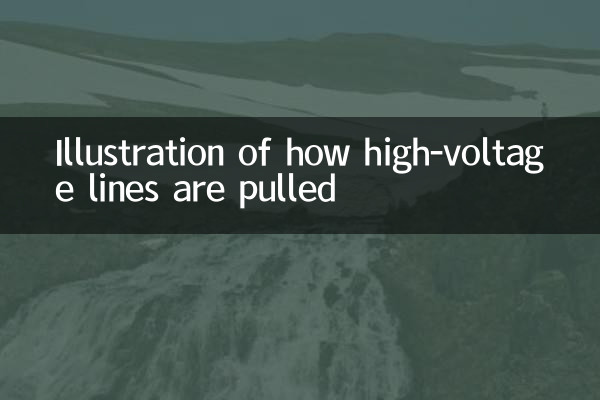Illustration of how high-voltage wires are pulled
The erection of high-voltage power lines is a complex and highly specialized project involving multiple steps and strict safety standards. Below are detailed diagrams and structured data for high-voltage line erection to help you understand the process.
1. Main steps in erecting high-voltage lines

| steps | content |
|---|---|
| 1. Survey and Design | Determine the line direction, topography, obstacles, etc., and design the tower location and wire type. |
| 2. Basic construction | Excavate the tower foundation and pour concrete to ensure the tower is stable. |
| 3. Tower assembly | Transport tower components to site for assembly at height. |
| 4. Wire spreading | Use a tractor or helicopter to pull the wire from one end to the other. |
| 5. Tightening and fixing | Adjust the wire tension to ensure that the sag meets the standard, and finally fix it on the insulator. |
| 6. Acceptance and power on | Conduct safety inspections, test line performance, and finally power on and run. |
2. Key technologies for erecting high-voltage lines
| technology | Description |
|---|---|
| Tension pay-off | The wire tension is controlled by pulling machine and tensioning machine to avoid wear and tear. |
| Helicopter display | In complex terrain, use helicopters to quickly deploy wires. |
| Insulator string installation | Make sure the wires are insulated from the tower to prevent current leakage. |
3. Safety precautions for erecting high-voltage lines
| Things to note | Details |
|---|---|
| Prevent electric shock | Construction workers need to wear insulating equipment and keep a safe distance. |
| Anti-fall | Use safety belts and safety nets when working at heights. |
| Prevent equipment damage | Avoid friction between the wire and the ground or obstacles. |
4. Answers to frequently asked questions about high-voltage line erection
| question | answer |
|---|---|
| Why can't high-voltage wires be straightened? | The wires need to have sag reserved to prevent breakage caused by thermal expansion and contraction. |
| How long does it take to erect high-voltage lines? | Depending on the length of the line of sight and the terrain, it usually takes several months. |
| Are high voltage lines harmful to the human body? | The electromagnetic radiation of high-voltage lines that meet the standards is within a safe range. |
5. Future development trends of high-voltage line erection
With the advancement of technology, the erection of high-voltage lines is developing in a more efficient and environmentally friendly direction:
| Trend | Description |
|---|---|
| smart grid | Real-time monitoring of line status through sensors. |
| green materials | Use recyclable or low environmental impact wire materials. |
| Automated construction | Introducing drones and robot-assisted erection. |
Through the above content, you can have a comprehensive understanding of the process of erecting high-voltage lines. This project requires not only superb technology, but also strict safety management to ensure stable transmission of power.

check the details

check the details